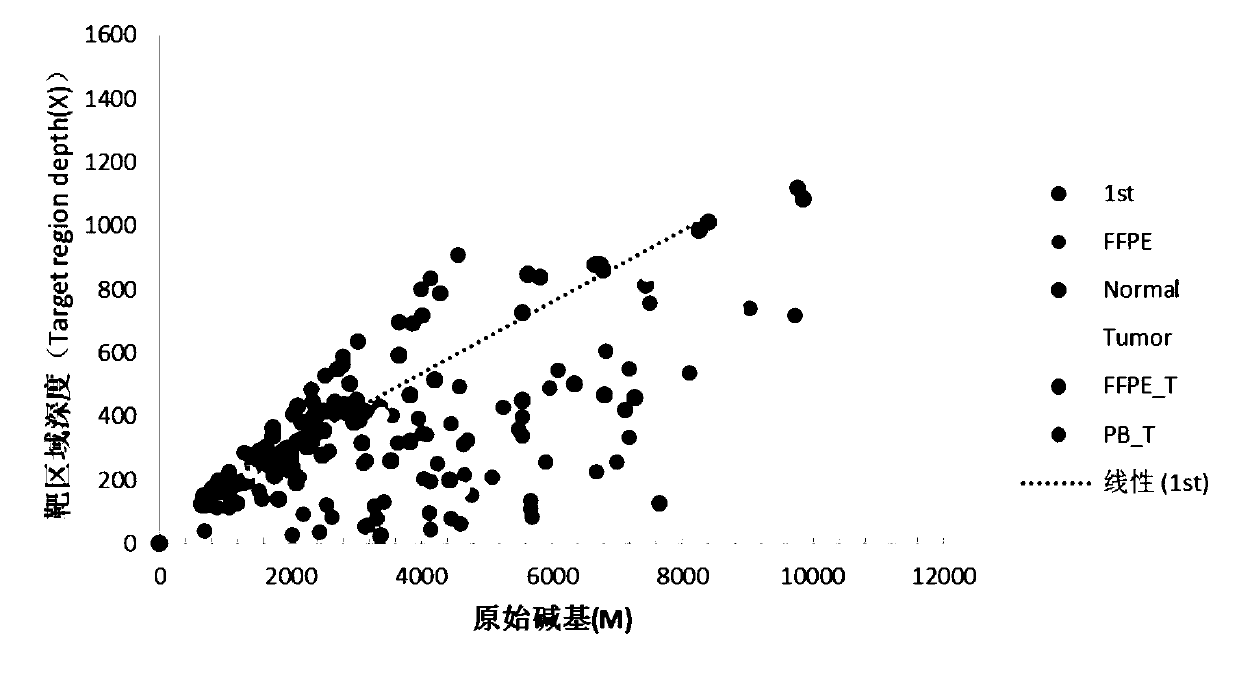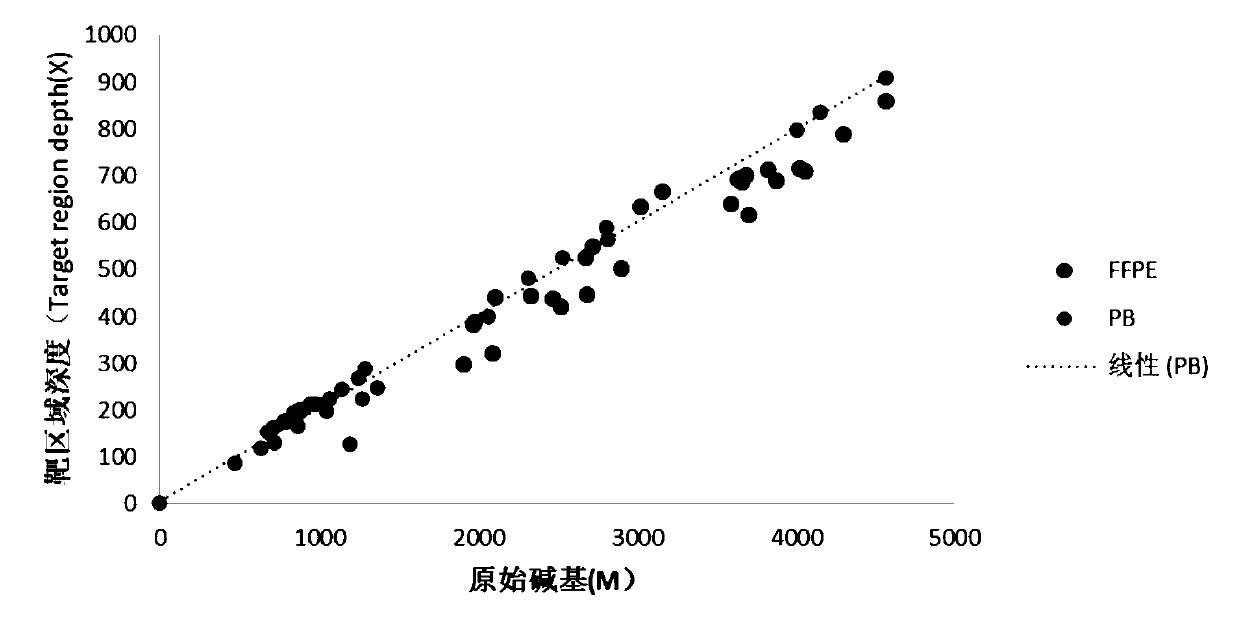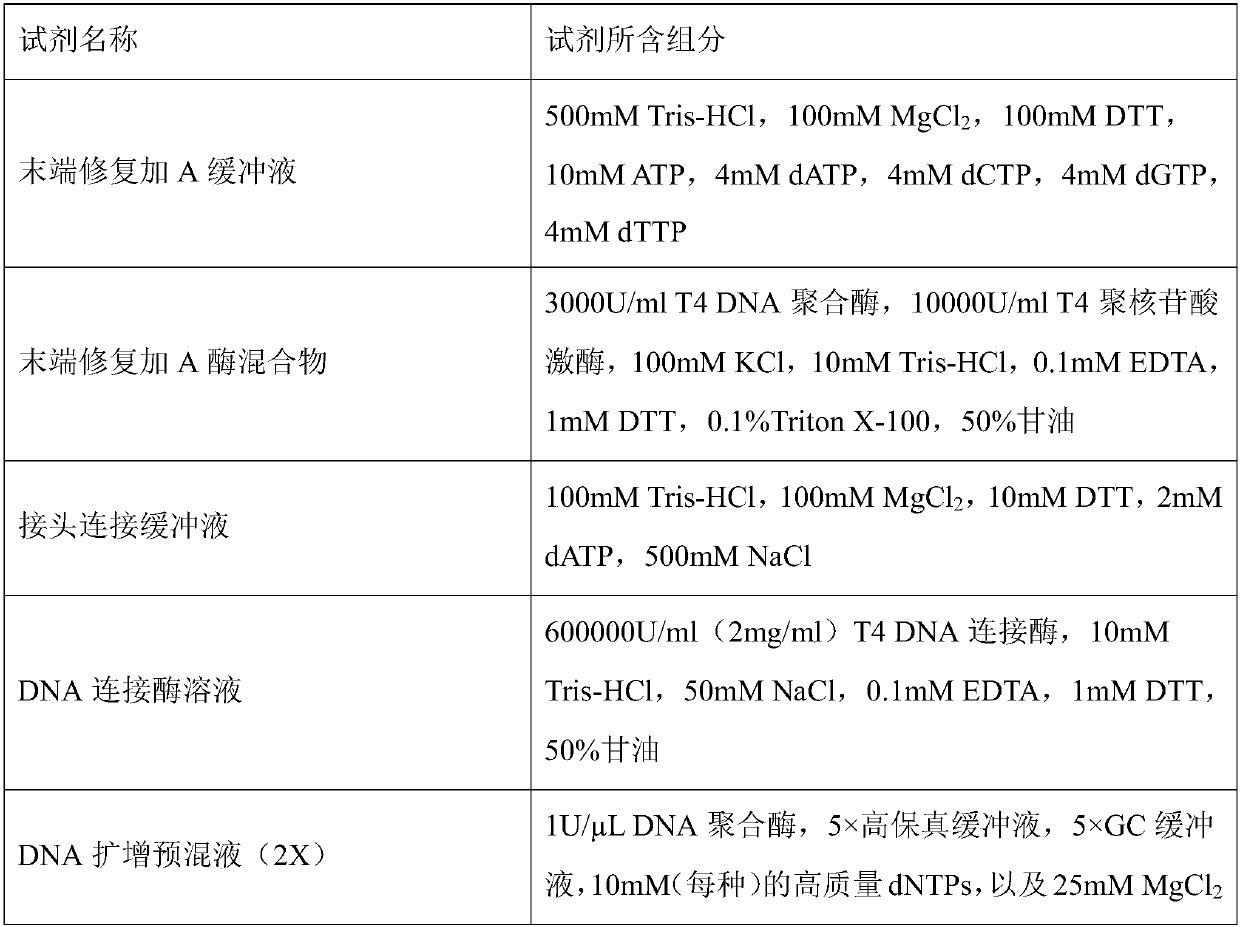FFPE DNA library building kit, use thereof and library building method
A kit and buffer technology, applied in the field of FFPEDNA library building kits, can solve the problems of low ligation efficiency, low pre-amplification efficiency, and poor capture efficiency, etc.
- Summary
- Abstract
- Description
- Claims
- Application Information
AI Technical Summary
Problems solved by technology
Method used
Image
Examples
Embodiment 1
[0121] In this embodiment, the first reagent is used to combine different adapters for library construction, and the specific steps are as follows:
[0122] 1. End repair plus A reaction, as shown in Table 6:
[0123] Table 6
[0124] components
Dosage
interrupted dsDNA fragment
50μl (fill up with ultrapure water without nucleic acid contamination)
End repair of the first reagent plus A buffer
7μl
End Repair Plus A Enzyme Mix for First Reagent
3μl
total capacity
60μl
[0125] Run the PCR instrument: heat lid 85°C; 20°C, 30min; 65°C, 30min; 4°C∞.
[0126] 2. Connection
[0127] 2.1 The first reagent + the third adapter, as shown in Table 7:
[0128] Table 7
[0129] components
Dosage
DNA obtained in step 1
60μl
Third Linker (15μM)
5μl
Ultrapure water without nucleic acid contamination
5μl
Adapter ligation buffer for the first reagent
30μl
DNA ligase ...
Embodiment 2
[0167] In this embodiment, the second reagent is used in combination with different adapters for library construction. The specific steps are as follows:
[0168] 1. End repair plus A reaction, as shown in Table 15:
[0169] Table 15
[0170] components
[0171] PCR instrument: hot lid 90°C; 22°C, 20min; 72°C, 20min; 4°C∞.
[0172] 2. Joint connection
[0173] 2.1 The second reagent + the third adapter, as shown in Table 16:
[0174] Table 16
[0175] components
[0176] Incubate at 20°C for 30 min; use 1.2 times XP magnetic beads to purify and measure the concentration with Qubit, and calculate the total amount.
[0177] 2.2 The second reagent + the first adapter, as shown in Table 17:
[0178] Table 17
[0179] components
[0180] Incubate at 20°C for 30 min; use 1.2 times XP magnetic beads to purify and measure the concentration with Qubit, and calculate the total amount.
[0181] 2.3 The second reagent + the fourth adapter, as shown in ...
Embodiment 3
[0211] In this embodiment, the third reagent is used in combination with different adapters to perform library building operations, and the specific steps are as follows:
[0212] 1. End repair plus A reaction, as shown in Table 24:
[0213] Table 24
[0214] components
Dosage
interrupted dsDNA fragment
40μl (make up with ultrapure water without nucleic acid contamination)
End repair of the third reagent plus A buffer
6.5μl
End Repair Plus A Enzyme Mix for Third Reagent
3.5μl
total capacity
50μl
[0215] PCR instrument: hot lid 90°C; 20°C, 30min; 65°C, 30min; 4°C∞.
[0216] 2. Joint connection
[0217] 2.1 The third reagent + the third adapter, as shown in Table 25:
[0218] Table 25
[0219] components
Dosage
DNA obtained in step 1
50μl
Ligation buffer for the third reagent
6μl
Ligation Enhancer for Third Reagent
38μl
T4 DNA ligase
5μl
Third Linker...
PUM
 Login to View More
Login to View More Abstract
Description
Claims
Application Information
 Login to View More
Login to View More - R&D
- Intellectual Property
- Life Sciences
- Materials
- Tech Scout
- Unparalleled Data Quality
- Higher Quality Content
- 60% Fewer Hallucinations
Browse by: Latest US Patents, China's latest patents, Technical Efficacy Thesaurus, Application Domain, Technology Topic, Popular Technical Reports.
© 2025 PatSnap. All rights reserved.Legal|Privacy policy|Modern Slavery Act Transparency Statement|Sitemap|About US| Contact US: help@patsnap.com



